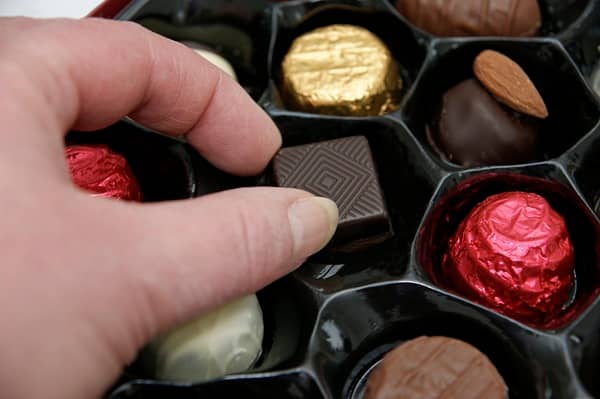A new business has opened in Covent Garden. Barnaby, a gourmet chocolatier, has opened up a new store with decor that differs from the norm. With wood panelling and glossy floor tiles, the store is looking to bring back the traditional appeal of stores, with Built Works and Morrisstudio working with the company to bring their vision to life.
A bold business move from Barnaby
Chocolatiers such as Lindt often use bright colours to command attention on retail shelves. After all, in the world of retail, a product needs to catch the eye of a potential buyer. Vibrant packaging has throughout history helped to do this, and it remains a big reason why most confectionery manufacturers use colour theory to try and drive purchases. Barnaby’s decision to step away from this tactic might, however, be a striking way for them to differentiate themselves in its own right.
If multiple products are on offer, each in different colours, it can be a way to imply variety and agency to the customer, all of which relate strongly to value. Multiple colours also help products to feel more dynamic, which can support higher price points. This trend isn’t just popular in retail either. Apple, for example, often offers deals on certain colours of iPhones, to drive sales and engagement for models that aren’t selling as well. Car manufacturers also offer more competitive prices for darker colours, as vibrant colours tend to attract a higher price point.
The gaming world is a particularly good example of how colour can be used to direct the consumer’s attention towards perceived value. For instance, in iGaming, the Sweet Bonanza slot uses specific colours to connote higher or lower monetary values, with the highest regular symbols being green, purple, and blue. From there, to win 40x your stake, you need to win 12 big red hearts. But, while the exact meaning of certain colours will differ from person to person, and between specific applications, there’s no denying how closely colour is tied to value and ultimately brand perception across all aspects of culture.
Taking into account things like this, and how much of a role colour has come to play in retail, especially in confectionery, it’s an interesting move from Barnaby to opt for a more muted scheme for their new store. The clean break away from the flashiness of modern commerce aesthetics might appeal to customers who yearn for simpler times, and even stand out amid a sea of hues.
Sophistication and timeless appeal
The owners have said that they want to imply sophistication and timeless appeal, with creative choices made to take the brand in a new direction. Even though BuiltWorks provided architectural services, it was Irving & Co who helped to work on the brand identity. They wanted to create something serious, but at the same time, something that had a lot of appeal. The company wanted to appeal to an older audience, with the design reflecting the Edwardian village of Bournville.
The pendant lights in the store reference clock towers, and the colour used on the tiles on the floor were taken after posters from the 1930s. The brand wanted to create a store that was rooted deeply in British tradition, which helps them to stand apart from Swiss chocolate retailers, as well as helping them to carve their own market.
The facade also uses tusk and tenon joints, which helps to support the traditional appeal of the shop while also referencing older woodworking techniques. The display counter references the classic appeal of a chocolate store, with potential to take things further by adding and expanding on them as time goes on. The store fits in very well with the appeal of Covent Garden, and could help to drive a new era for retailers across the UK.
Please play responsibly. For more information and advice visit https://www.begambleaware.org
Content is not intended for an audience under 18 years of age

